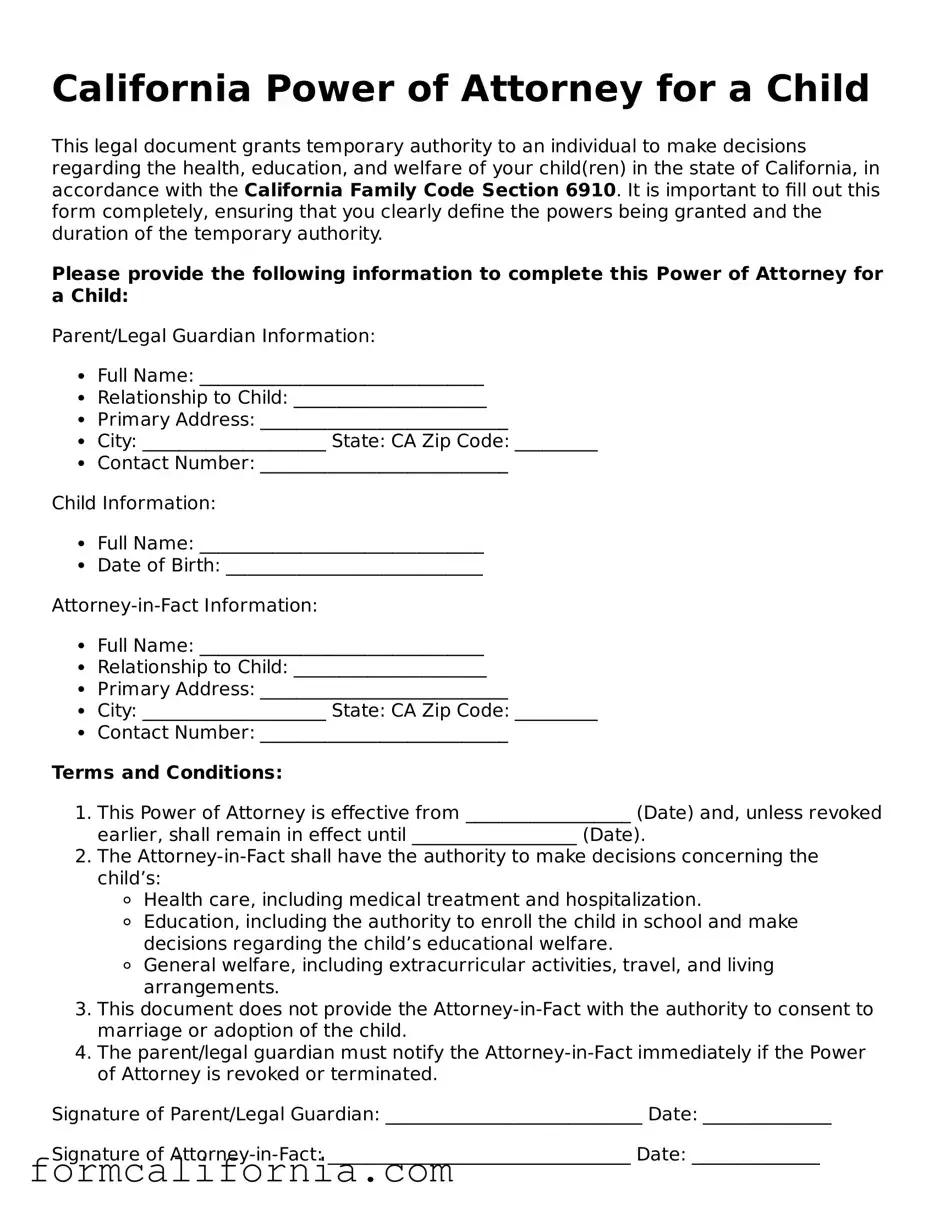California Power of Attorney for a Child
This legal document grants temporary authority to an individual to make decisions regarding the health, education, and welfare of your child(ren) in the state of California, in accordance with the California Family Code Section 6910. It is important to fill out this form completely, ensuring that you clearly define the powers being granted and the duration of the temporary authority.
Please provide the following information to complete this Power of Attorney for a Child:
Parent/Legal Guardian Information:
- Full Name: _______________________________
- Relationship to Child: _____________________
- Primary Address: ___________________________
- City: ____________________ State: CA Zip Code: _________
- Contact Number: ___________________________
Child Information:
- Full Name: _______________________________
- Date of Birth: ____________________________
Attorney-in-Fact Information:
- Full Name: _______________________________
- Relationship to Child: _____________________
- Primary Address: ___________________________
- City: ____________________ State: CA Zip Code: _________
- Contact Number: ___________________________
Terms and Conditions:
- This Power of Attorney is effective from __________________ (Date) and, unless revoked earlier, shall remain in effect until __________________ (Date).
- The Attorney-in-Fact shall have the authority to make decisions concerning the child’s:
- Health care, including medical treatment and hospitalization.
- Education, including the authority to enroll the child in school and make decisions regarding the child’s educational welfare.
- General welfare, including extracurricular activities, travel, and living arrangements.
- This document does not provide the Attorney-in-Fact with the authority to consent to marriage or adoption of the child.
- The parent/legal guardian must notify the Attorney-in-Fact immediately if the Power of Attorney is revoked or terminated.
Signature of Parent/Legal Guardian: ____________________________ Date: ______________
Signature of Attorney-in-Fact: _________________________________ Date: ______________
State of California
County of ____________________
On this day, ________________, before me, ________________________ (name of notary), personally appeared the above-named parent/legal guardian, known to me (or proved to me on the basis of satisfactory evidence) to be the person(s) whose name(s) is/are subscribed to this instrument, and acknowledged that he/she/they executed the same.
Witness my hand and official seal.
Signature of Notary Public: ____________________________
Seal:
